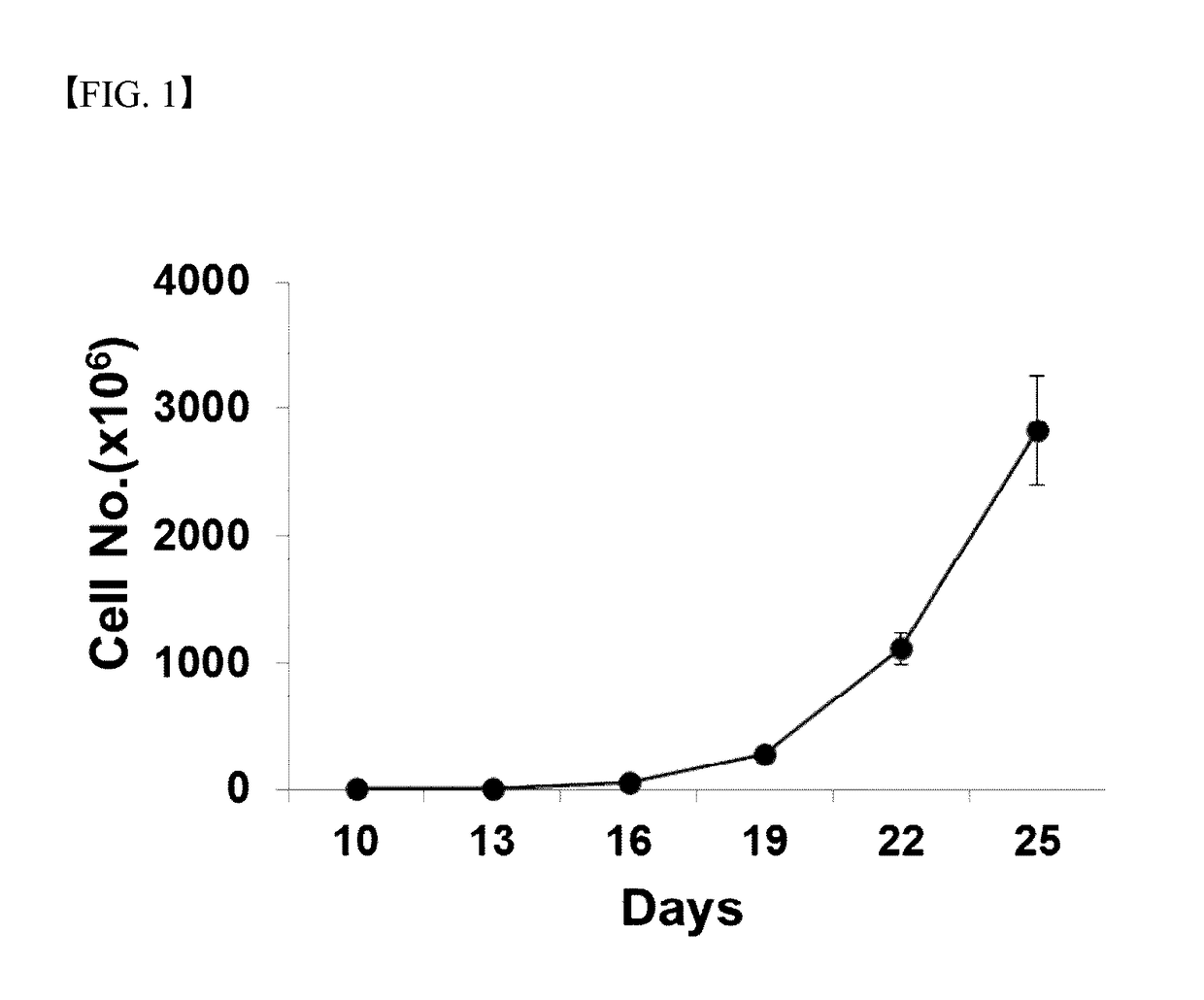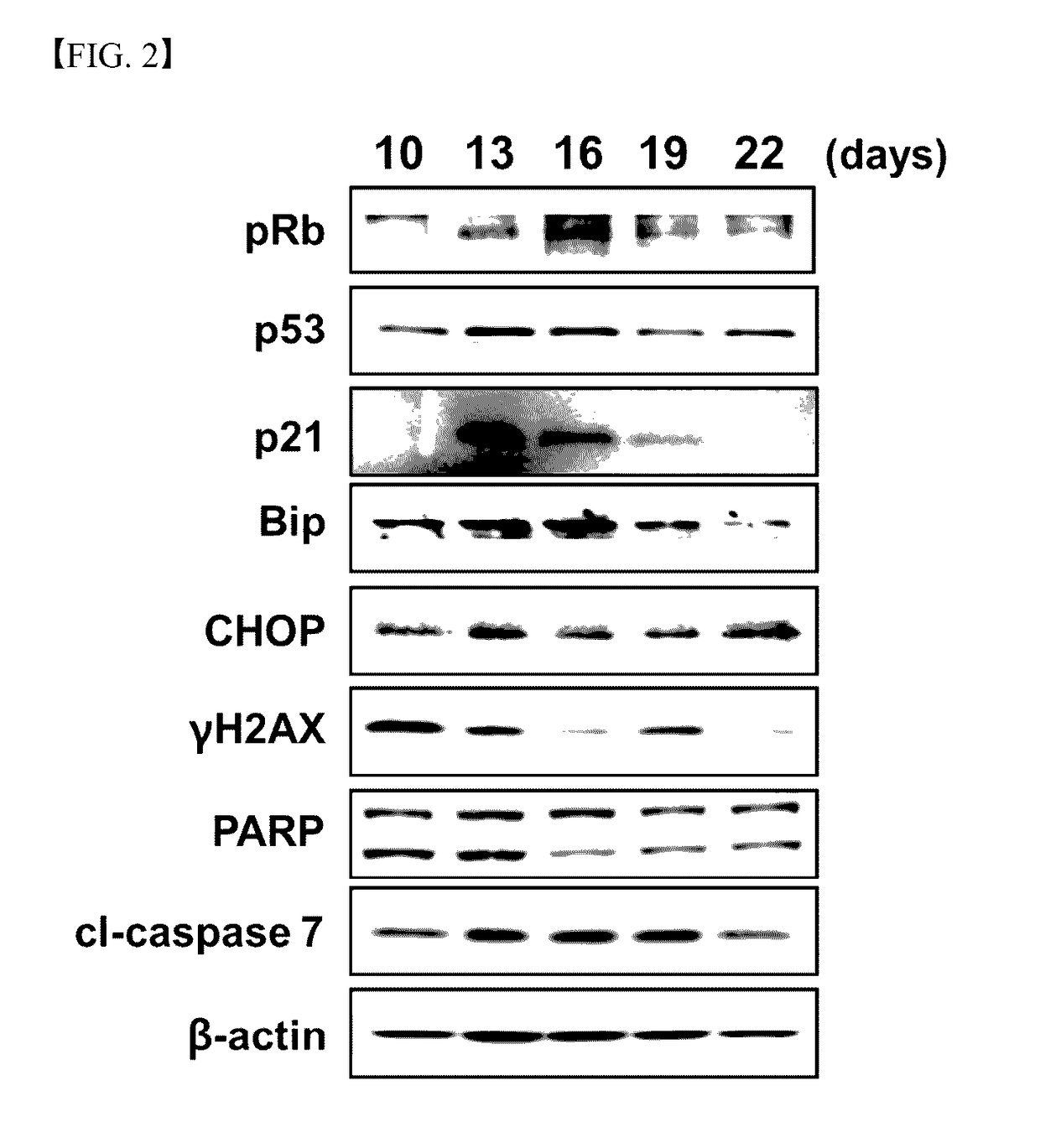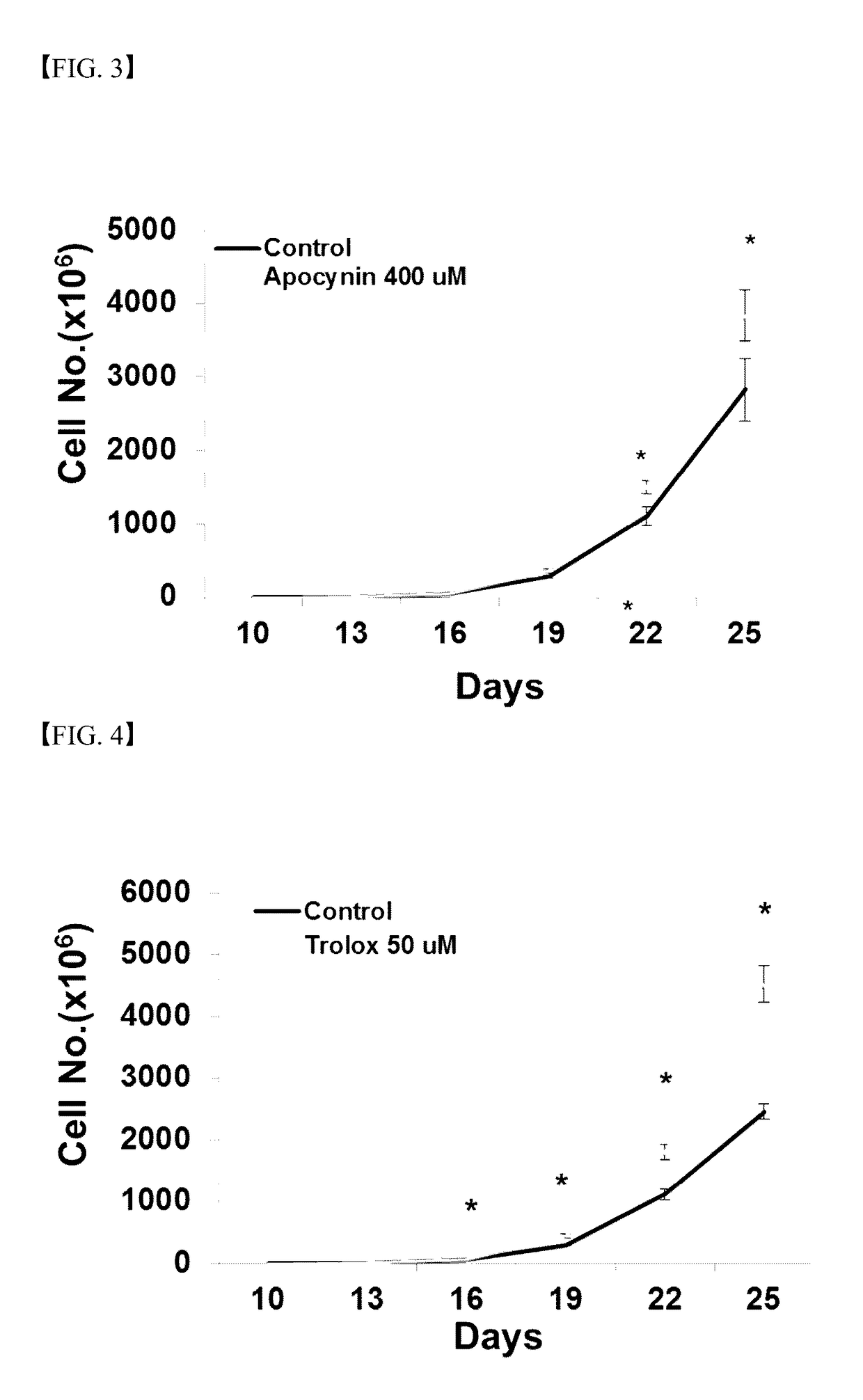Method of expanding nk cell and composition for culturing
a composition and cell technology, applied in the field of enhancing natural killer cell (nk cell) expansion, can solve the problems of inability to maintain prone to apoptosis or cellular senescence, and inability to carry out long-term survival. or long-term survival of ex vivo-cultured immune cells, etc., to achieve the effect of increasing the number of cells
- Summary
- Abstract
- Description
- Claims
- Application Information
AI Technical Summary
Benefits of technology
Problems solved by technology
Method used
Image
Examples
preparation example 1
Preparation and Culture of NK Cells
[0078]Human blood was prepared, and subjected to centrifugation at 2500 rpm for 30 minutes using Ficoll (Ficoll-Paque™ PLUS, GE Healthcare). Then, peripheral blood mononuclear cells were isolated from a buffy coat.
[0079]Afterward, a Jurkat cell line irradiated at 100 Gy and an EBV-LCL cell line were co-cultured with PBMCs: KL-1: EBV-LCL in a ratio of 1:0.5:0.5 in hRPMI medium prepared by adding 10% FBS and 1% penicillin / streptomycin to RPMI1640 medium in the presence of 500 U / ml IL-2, and the medium was exchanged with hRPMI medium supplemented with 500 U / ml IL-2 once for 2 to 3 days.
experimental example 1
Examination of Influence of ROS and / or p53 Inhibitor on Culture of NK Cells
[0080]An examination of a change of proteins expression of NK cells during the culture of the NK cell as in the Preparation Example 1 was conducted. A cell cycle-associated marker pRb, cellular senescence markers P53 and P21, ER stress markers Bip and CHOP, a DNA damage marker γH2AX, and apoptosis markers PARP and cl-caspase-7 were identified.
[0081]The results are shown in FIG. 2, confirming that most of the markers peaked at 13 to 16 days.
[0082]To examine the influence of an ROS inhibitor on NK cells, the NK cells were cultured for 10 days under the conditions of Preparation Example 1. Then, 400 μM of an apocynin (Calbiochem), 50 μM of trolox (Santa Cruz) and 1 μM of pifithrin-α (Santa Cruz) were treated individually, and 50 μM trolox and 500 nM pifithrin-α were treated in a combination. The inhibitor was treated at three-day intervals, and a cell number was assessed after culture for 2 weeks. Here, the medi...
experimental example 2
Measurement of Changes in Cancer Cell Killing Activity of NK Cells
[0085]An experiment was performed to examine cancer cell killing activity of NK cells treated with the inhibitor.
[0086]As target cells, K562 and A375 cells were prepared, labeled with chromium for 1 hour, co-cultured with the NK cells in a suitable ratio, and then a supernatant was taken from the cell culture after 4 hours so as to measure an isotopic value using a gamma counter. The experiment was performed on a control group which was not treated, and groups treated with apocynin, trolox, pifithrin-α and trolox+pifithrin-α, respectively, and the results are shown in FIG. 7.
[0087]As shown in FIG. 7, even when the cells were cultured with the ROS inhibitor and / or p53 inhibitor according to the present invention, the cancer cell killing activity was maintained at the same level as that in the non-treated control group.
[0088]Also, as target cells, K562 and A375 cells were prepared, and NK cells and the target cells were...
PUM
| Property | Measurement | Unit |
|---|---|---|
| molar ratio | aaaaa | aaaaa |
| molar ratio | aaaaa | aaaaa |
| mediated stress | aaaaa | aaaaa |
Abstract
Description
Claims
Application Information
 Login to View More
Login to View More - R&D
- Intellectual Property
- Life Sciences
- Materials
- Tech Scout
- Unparalleled Data Quality
- Higher Quality Content
- 60% Fewer Hallucinations
Browse by: Latest US Patents, China's latest patents, Technical Efficacy Thesaurus, Application Domain, Technology Topic, Popular Technical Reports.
© 2025 PatSnap. All rights reserved.Legal|Privacy policy|Modern Slavery Act Transparency Statement|Sitemap|About US| Contact US: help@patsnap.com



